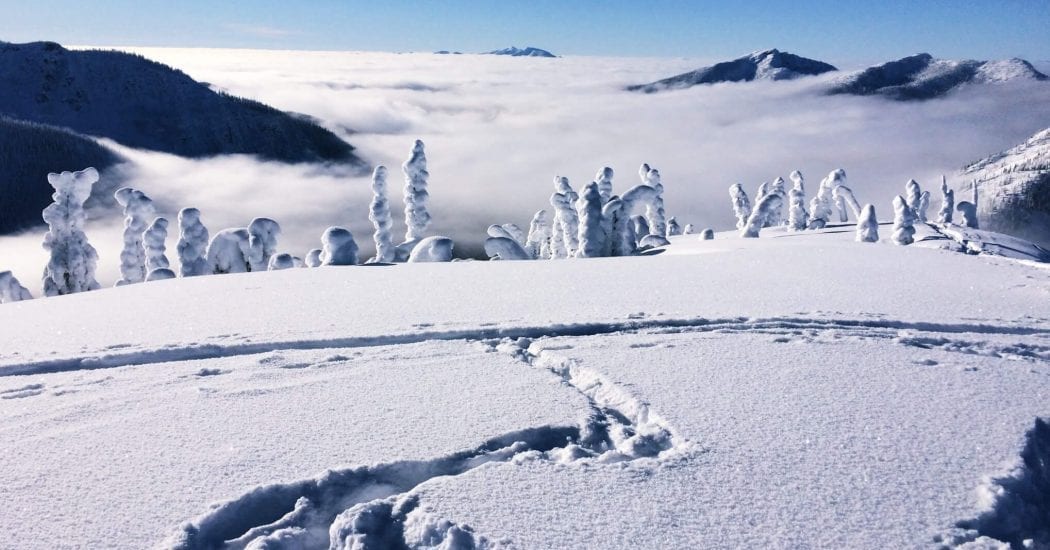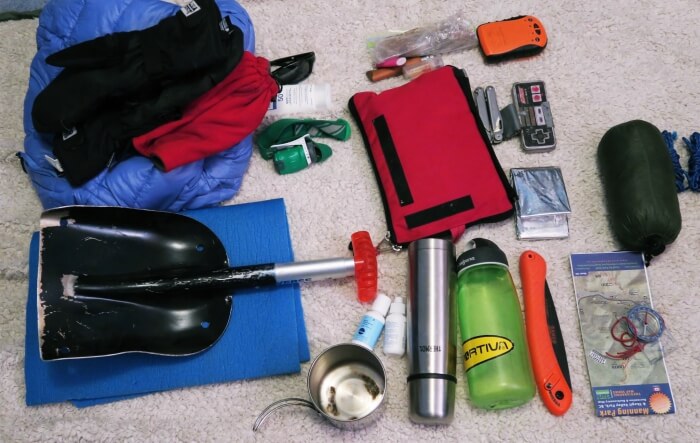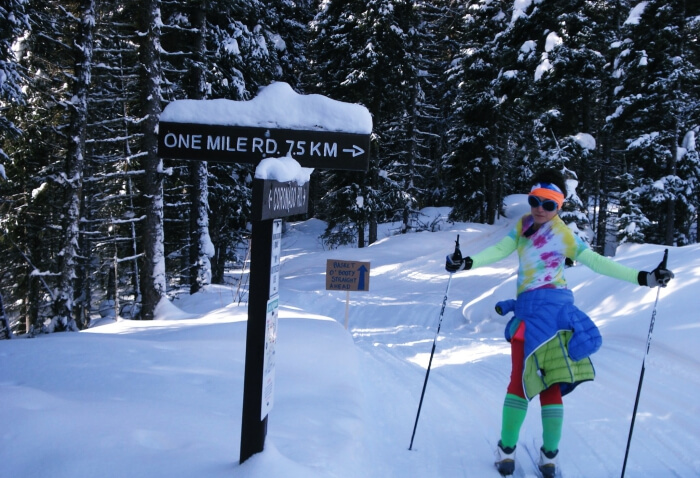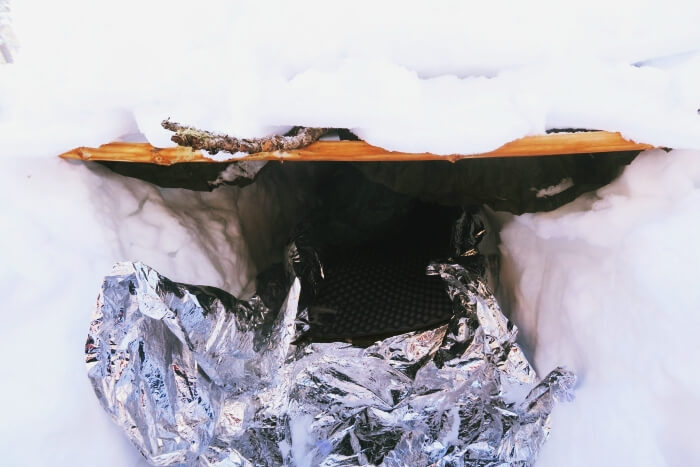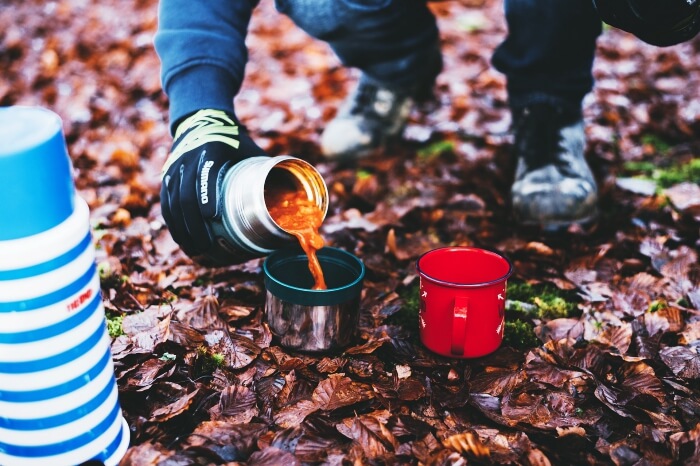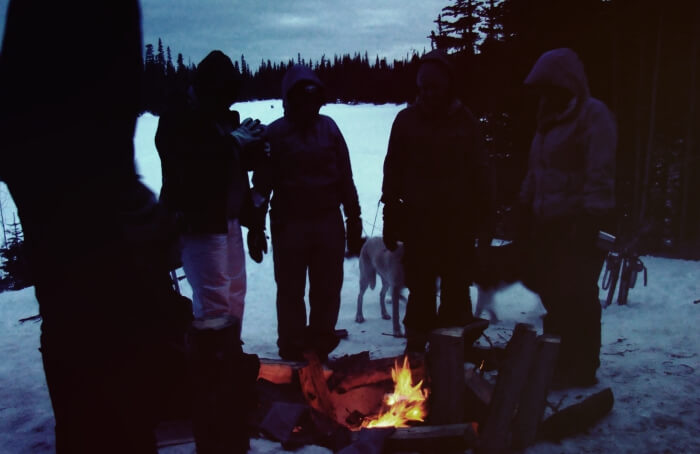The 10 essentials – those items that we can rely on when hikes don’t go as planned – are a crucial part of staying safe in the backcountry. Many of us dutifully make sure they are in our packs before we head out, regardless of whether we call them the “10 essential” or not.
Come winter, however, it’s important to reassess the emergency gear in our pack. Between shorter days and the cold, wet weather, and problems that may not be a major concern in the summer, it could end in disaster. Not only is it extra important that hikers and other outdoor adventurers pack their 10 essentials, but also that they cater it to the season.
Note that various sources have slightly different lists. I’ve listed my favourites, and have added a few other items to consider.
1. Knife and Gear Repair Kit
A knife really is a must. Among other things, it can help make tinder and kindling, prepare food, repair gear, and perform first aid. This is true no matter what season you’re hiking in. While most people hike with a knife, many overlook the need for a repair kit. I typically bring a multitool, some duct tape, needle and dental floss (stronger than thread), a few meters of paracord, and some safety pins. That’s enough to patch up tents and replace broken straps. For winter, bear in mind that you may have some winter specific gear to repair. If you are on snowshoes or skis, for example, make sure you have what you need to fix those and have a backup plan for broken straps or bindings.
Check out some of our favourite survival knives here.
2. Sun Protection
Snow does quite a spectacular job of reflecting sunlight,
and I know quite a few people, myself included,
who have gotten a sunburn in winter.
It may be cold, but sun protection is still important. Snow does quite a spectacular job of reflecting sunlight, and I know quite a few people, myself included, who have gotten a sunburn in winter. Lather on some sunscreen and bring those sunglasses. Even if there isn’t any snow sending all the light back your way, UV rays can do some damage.
Even more alarming is the possibility of snow blindness. All that reflective UV rays can sunburn your corneas. It lasts one or two days and can cause pain, irritation, and difficulty seeing. Sunglasses or ski goggles should always be in your pack, if not on your face if you are travelling in snow.
3. Warm Clothes
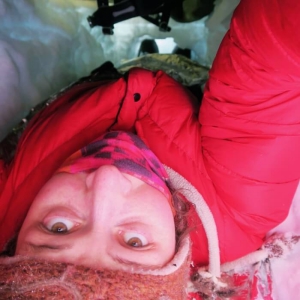
Warm clothes in winter may be a given, but bringing the right warm clothes is key. Layer your clothes with a thin, sweat-wicking base layer, add some warm mid layers, and a waterproof shell and you’re good to go. Shed layers as you need. Don’t be afraid to shed layers to stay cool – getting sweaty will mean being cold and damp when it’s time for a rest.
Bring an extra warm hat, an extra pair of gloves, and an extra mid layer. Spare socks aren’t a bad idea either.
Avoid cotton. Actually, don’t just avoid cotton, don’t bring it. Period. Once cotton is wet, it takes a long time to dry and will keep you cold. Also, while down is wonderfully warm, it loses it’s loft when it gets wet. Make sure you have a waterproof shell to protect and avoid sweating on it. It’s a good item to have tucked away for rests unless it gets really cold.
4. Navigation
If you are headed into a snowy area that is familiar in the summer,
don’t rely on your memory.
You might have heard warning against relying on your GPS or smartphones for navigation in the wilderness, and this is especially true in winter. Batteries die quickly in the cold, and wet conditions can be pretty brutal to electronics. Don’t get me wrong, electronic navigation is amazing, but it doesn’t negate the need for a map and compass.
Compasses are filled with a combination of alcohol and water and shouldn’t freeze in most winter conditions. If you are headed into sub-zero temperatures, pick up a higher end compass. Suunto compasses are rated down to -22° F, so if you store it somewhere under your layers it should be fine, even in the most frigid weather.
Of course, a compass is useless without maps, and maps are useless without knowing how to read them. If you are headed into a snowy area that is familiar in the summer, don’t rely on your memory. The terrain can look very different with thick snow cover, and the trail and other landmarks can be hard to find. Mountain areas tend to have completely separate winter routes, so be wary of that possibility.
5. Shelter
Educate yourself on the best shelters for your local area.
Get to know the materials you are likely to have at your disposal.
At most times of the year, this means a tarp, mylar emergency blanket, emergency bivvy or even a large garbage bag, and winter is no different. Just bring more of it and have a plan. In winter, it is extra important to stay dry. Even if you live in an area with mild winters, spending a few extra hours with wet clothes can cause your core body temperature to plummet. Staying warm is absolutely essential. You can get lightweight silicon emergency tarps like this Sea to Summit poncho tarp or simply pack a few heavy duty garbage bags.
Pack at least two mylar emergency blankets or an emergency bivvy (or both). You can wrap one blanket around yourself, while the other lines the inside of your shelter or acts as a reflector for your fire. They are also waterproof and can double as a tarp in a pinch, though they tear pretty easily.
If you don’t pack cord in your repair kit, add it to your shelter kit. You can use it to tie your tarp down and build a rudimentary frame for a shelter. A light folding saw will allow you to cut branches to build a shelter, and boughs to help insulate it.
Educate yourself on the best shelters for your local area. Get to know the materials you are likely to have at your disposal. Regardless of what you choose for materials keep your shelter small to cut down on the space that you need to heat. Snow is an excellent building material as it is a readily available and a good insulator. The trench shelter (featured in the video below) is a fast an effective snow shelter. Foldable shovels make an excellent addition to the pack when snowshoeing or skiing. And will make shelter building much easier.
6. Light Source
With short days, having a good light source is crucial. Bring extra batteries for your headlamp and store them close to your body. A small candle can also be a good addition.
7. First Aid Kit
There isn’t a whole lot of difference between winter and summer here. I keep an extra mylar blanket in my first aid kit. Rather than extra pieces of kit, arm yourself with knowledge. Take a wilderness first aid kit, or at the very least, educate yourself on how to recognize and treat cold-related conditions such as hypothermia and frostbite. Mild hypothermia can have some scary side effects that vary from person to person, so you need to take extra care!
8. Hydration
A hot drink or soup in a thermos is not only good for morale,
but it can stave off advancing hypothermia.
It’s easy to forget to drink in the cold. Make sure that you carry lots of water and keep yourself hydrated. Bring chemical water treatment or a filter in case you run out, but beware that liquid water treatment, and wet filters can both freeze. If it’s below freezing, store your water in your pack rather than in an outside pocket so it doesn’t freeze. If it’s very cold, use a thermos or insulated bottle. A hot drink or soup in a thermos is not only good for morale, but it can stave off advancing hypothermia.
Eating snow will make your body use precious energy to melt it. If liquid water will be hard to come by, bring a metal container to melt ice or snow in. Melt ice rather than snow if possible. Snow is mostly air, so you’ll get a lot less out of it. The bonus is that you can boil the water, killing pathogens while giving yourself a warmth boost.
9. Extra Food
Your body burns a lot of calories tromping through the snow and keeping warm. Pack your food accordingly. Bring calorie dense food such as energy bars, fruit, cheese, and nuts. It’s important to have both fats and carbohydrates -carbs to give you a quick bump in energy, and fats to keep you going throughout the day.
Always bring a few extra bars or non-perishable, calorie dense food. I choose a few bars that I don’t really like and keep them in my pack all season. That way, I’m not likely to eat them unless I need them.
10. Fire
Bring more than one ignition source, such as a lighter,
waterproof match, flint and steel, or a Ferro rod.
Your ability to light a fire may be a matter of life or death. Hypothermia occurs when the body is unable to heat the body faster than it’s being cooled. While putting on warm, dry clothes may slow the heat loss, heat from an external source, such as a fire, will do a lot more to prevent, and reverse the heat drain.
Bring more than one ignition source, such as a lighter, waterproof match, flint and steel, or a Ferro rod. Pack some firestarter – homemade or store-bought. Know where to find natural sources of firestarter such as birch bark and fatwood (resin-soaked wood from dead conifers). That folding saw from your shelter kit will also come on handy for cutting firewood, and you can use a strong knife for batoning wood into kindling. Practice making fires with the materials in your kit, especially in wet conditions.
The most valuable thing you can bring on a winter
(or any season) adventure is knowledge. Know the
climate and terrain that you are headed into.
Bonus Items
Communication
Cell phones may not work, so consider investing in a SPOT Satellite Messenger or a Garmin inReach to communicate via satellite. Beware that just purchasing the device is not enough. They both require an ongoing fee. Regardless of what you choose, bring spare batteries or a battery pack for recharging. Store them somewhere warm to extend their life.
Signaling devices are also a good idea. A pealess (that little ball in some whistles can freeze) whistle like the Fox40 will make noise iatany temperature. An orange garbage bag will not only help with signaling an aircraft, but can also be a makeshift tarp and rain poncho. Choose a compass with a mirror so you can have yet another signal on hand.
Avalanche Gear
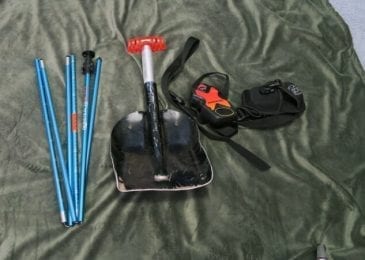
Footwear
If you usually hike in trail runners, winter might be a good time to beef up your footwear. Wet feet in winter won’t dry out quickly, and will keep you cold all day. If you are headed into snow, bring warm snow boots or gators to stop your boots from filling up with snow. Ice cleats will be a huge help on icy trails.
A Foam Sit Pad
Your bum will thank you for giving something warm and dry to sit on. The cheapest option for this is to find a cheap blue foamy and cut it into your preferred size. You can get enough for the whole family from one pad. Therm-a-Rest makes an affordable folding cushion to do the job.
A Friend
While those of us who love hiking alone (myself included) have come to terms with the fact that it’s not quite the safest choice, the colder the weather the more dangerous it is. People often find it hard to identify signs of hypothermia in themselves, especially as it advances to dangerous levels. Using the buddy system will allow you to keep an eye on each other. It also decreases your chance of getting lost and gives you someone to help with first aid or go get help if needed.
A Word of Warning
These items will only get you so far. The most valuable thing you can bring on a winter (or any season) adventure is knowledge. Know the climate and terrain that you are headed into. Check the weather before you go, and know that bad weather can pop up at any time, regardless of the forecast. Pack a map and study your route beforehand. Practice building shelters and fires with materials available in your area. Know how to avoid hypothermia how to identify and treat it. Every one of the items on this list can be modified according to your needs, but it is important to understand your needs. Winter forays into the wilderness can be extremely rewarding, but they can be equally dangerous if you don’t know what you are doing.
